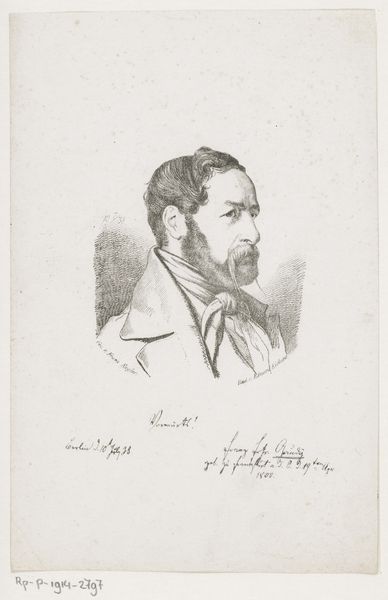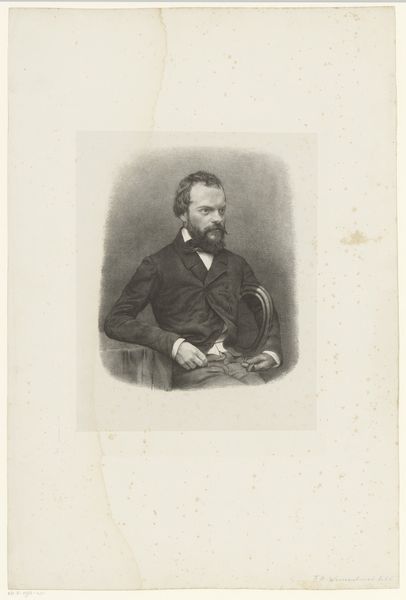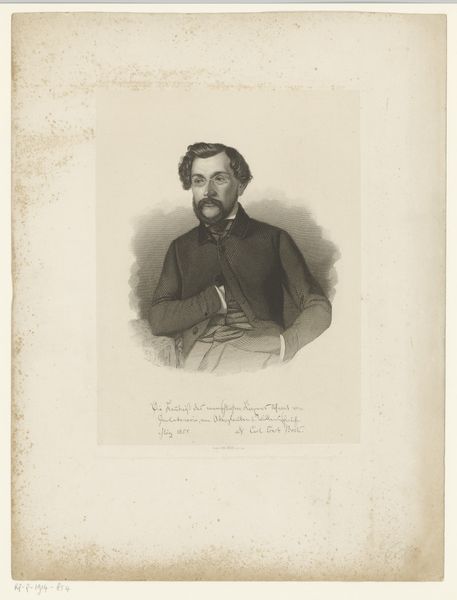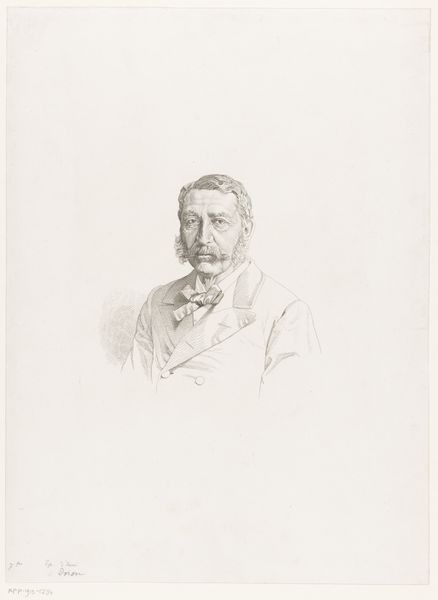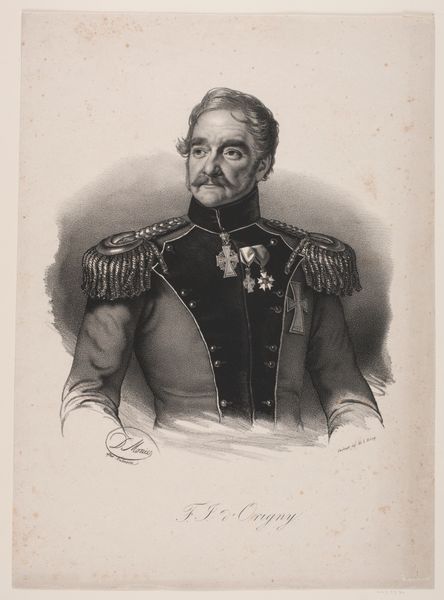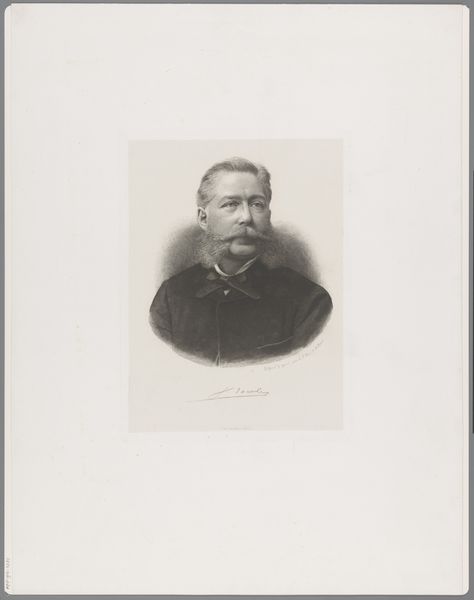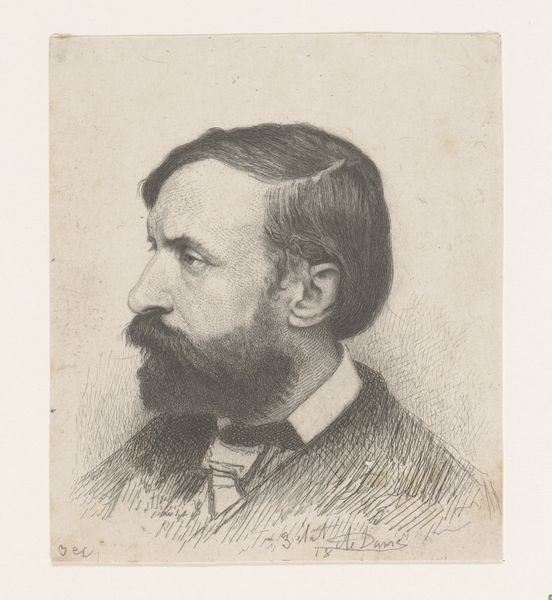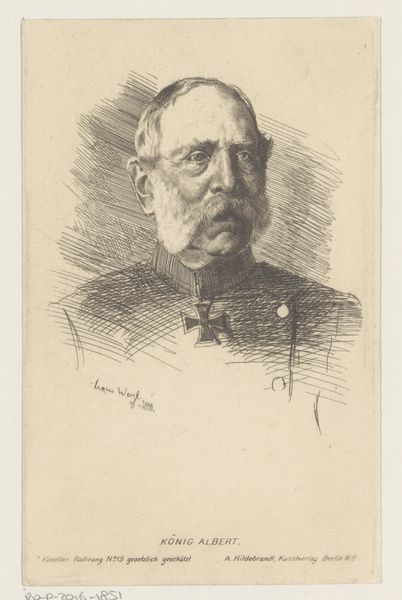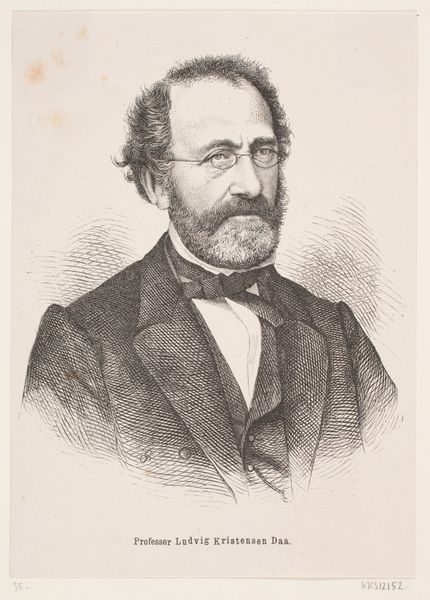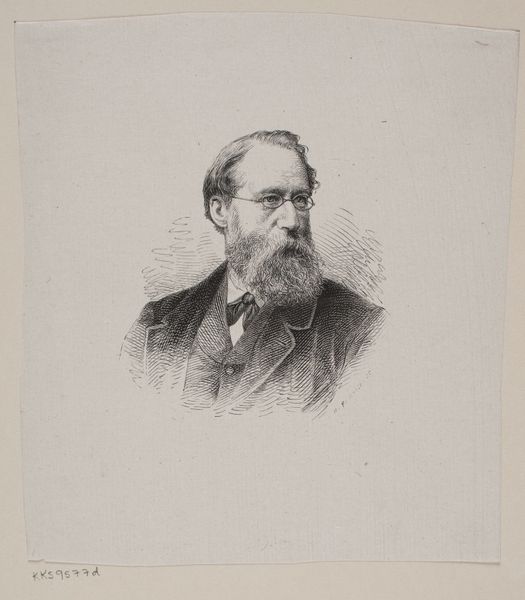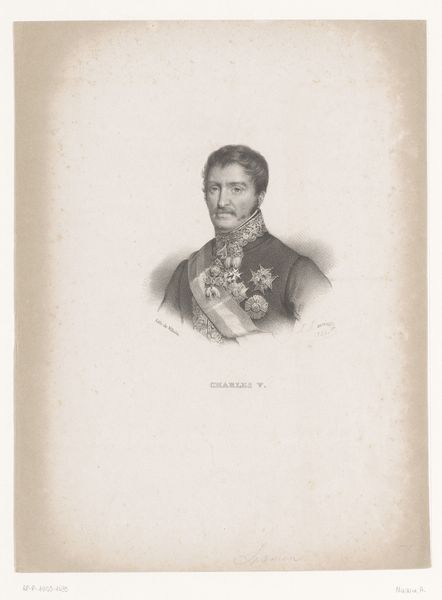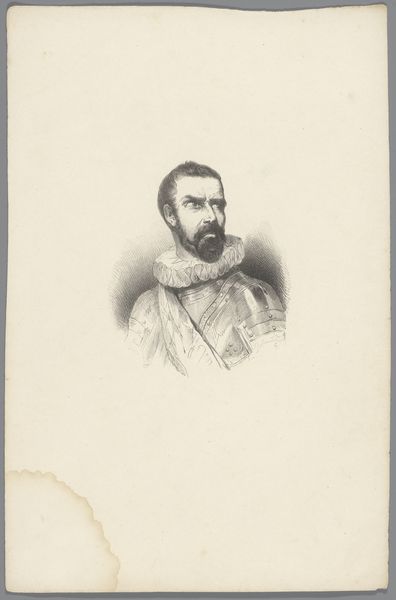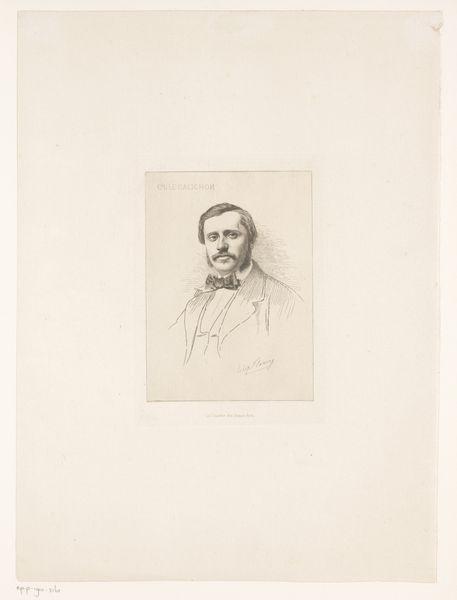
drawing, print, graphite
#
portrait
#
drawing
# print
#
caricature
#
romanticism
#
graphite
#
portrait drawing
#
realism
Dimensions: height 312 mm, width 235 mm
Copyright: Rijks Museum: Open Domain
Curator: Before us is "Man with an Iron Gorget," a graphite drawing, potentially also a print, made by Carel Christiaan Antony Last, sometime between 1834 and 1850. The artwork resides here at the Rijksmuseum. Editor: The use of graphite really captures the metallic sheen of that gorget—it has a convincing weight and presence. The subject's gaze avoids direct engagement; it’s as if he's contemplating something weighty, burdened by a past. Curator: That gorget immediately calls to mind military power, the weight of masculine expectations and potential conflict inherent in 19th century European power dynamics. But what’s fascinating to me is Last's choice to depict this figure outside any obvious battlefield context. What social and political statements can we extract by considering what’s deliberately left out? Editor: Indeed. Stripped of context, we are left with pure form. Note the delicate hatching around the face juxtaposed against the bold, clean lines of the iron collar. It creates a tension, doesn't it? The softness of the human versus the unyielding hardness of imposed structure. Curator: And it reflects on the nature of portraiture itself, doesn't it? The tension between individual expression and societal roles, perhaps heightened for men in this historical moment navigating industrialization, nationalism and empire? The work seems to subtly critique the limitations placed on individual identity by societal norms. Editor: The way light glances off the metal is superb; the highlights feel meticulously planned to draw your eye into the geometric forms creating contrast with the subject’s face. I find a beauty in those shapes, in the reduction of human presence to stark planes. Curator: Which also reveals Last's own artistic project, right? Considering portraiture as a site where these individual and social tensions manifest invites critical reflection. What is the work of portraiture in solidifying or subverting prevailing norms of the time? Editor: This close inspection yields unexpected insight. Curator: Absolutely. It’s through exploring those tensions and challenging assumptions that new perspectives are brought into focus.
Comments
No comments
Be the first to comment and join the conversation on the ultimate creative platform.
